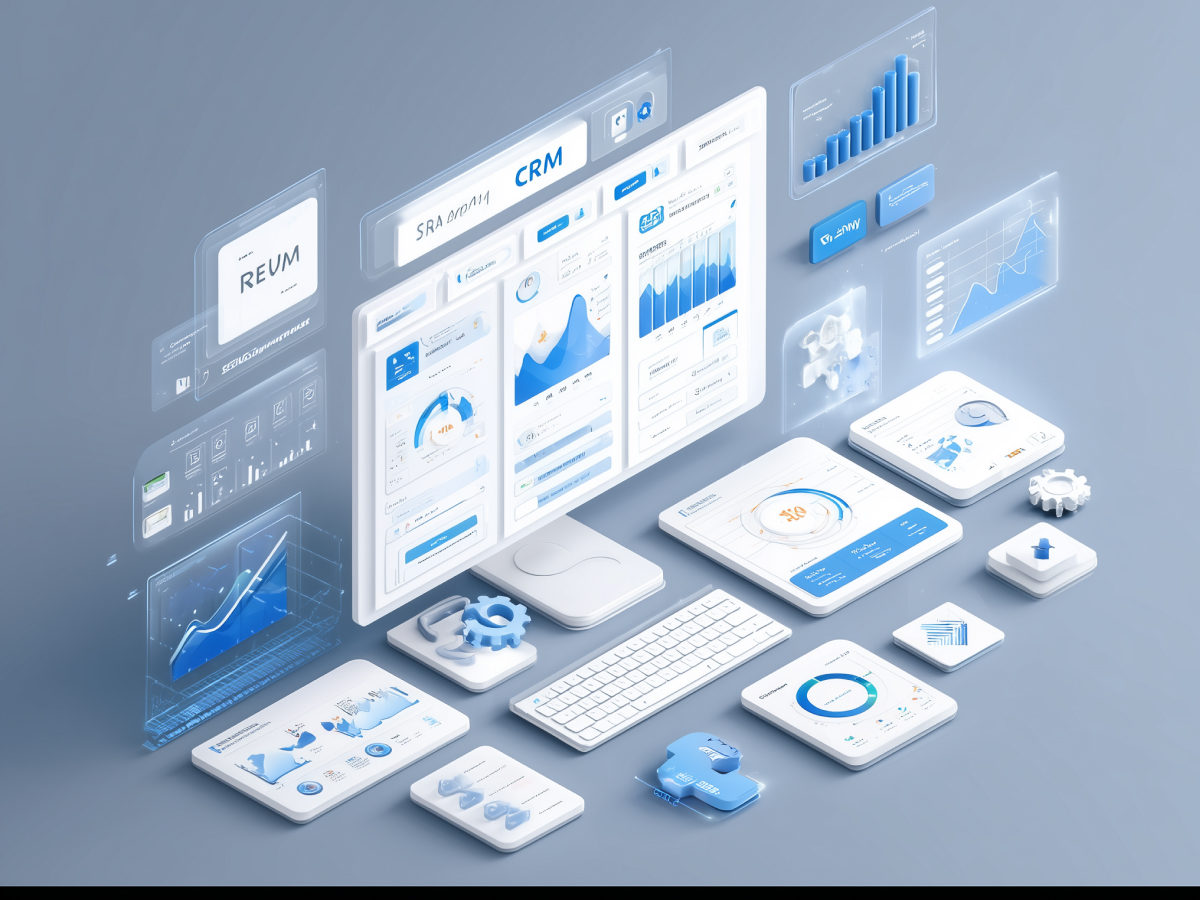Data migration is a structured process for transferring data between systems
When you’re dealing with change at scale, new systems, upgraded platforms, or a full-scale move to the cloud, you don’t want to rebuild everything from scratch. That’s inefficient, high-risk, and, frankly, unnecessary. This is where data migration comes into play.
Data migration is the systematic process of moving information from one setup to another. It’s not just lifting data from one place and dropping it into another. It’s about transferring data in a way that keeps its usefulness and integrity intact. Companies usually carry this out when replacing outdated infrastructure, shifting to cloud platforms, or upgrading software. The intent is clear: bring existing, valuable data into new environments where it can continue to perform, or perform even better.
The process needs to be deliberate. You’re often dealing with decades of accumulated data, stored in different formats, built on different systems. If you don’t plan it properly, you risk losing critical information, triggering operational issues, or creating governance gaps. So, while migrating data may sound straightforward, its execution demands attention to design, scale, and consistency.
For leadership, it’s essential to understand this: data migration isn’t just a backend action item. It’s a business event. It determines whether your new infrastructure will be immediately productive or stuck in operational limbo. If you want agility and continuity across your systems, get data migration right the first time.
A defined, multi-phase process underlies successful data migration projects
If your migration plan is vague, you’re already losing. A successful data migration starts with a structured approach. First, you need to know what you’re dealing with. That means analyzing your existing data, how much there is, how good it is, and where it resides. Then, develop a migration roadmap that defines the scope, timeline, and technical requirements. You’ll also want to identify stakeholders, data architects, compliance teams, system owners. Make sure everyone understands who’s doing what, and when.
Next comes extraction. This is where you pull data from your existing systems using either scripts or automated tools. But raw transfers won’t work. You need to clean the data, remove duplicates, fix errors, align formats. This is where normalization and mapping come in. The goal is simple: data has to make sense in the new system. If it doesn’t map cleanly, you’re not migrating, you’re creating future problems.
Once prepared, you test. Use sample data. Validate and troubleshoot. If the results are solid, if the migrated data behaves exactly as expected, you move forward. Then and only then, you push the new system into production.
For executives, here’s the signal in the noise: a staged approach reduces cost, risk, and downtime. It protects continuity. Migration is not a one-action task, it’s an operational strategy. Oversimplify it, and your teams will spend the next year fixing what should’ve been done right the first time. Treat migration like a launch sequence. Each phase builds on the last, and none of it is optional if you care about performance at scale.
Data migration improves data quality, accessibility, governance, and overall operational resilience
There’s a misconception that data migration is only about moving information. In reality, it’s a high-leverage opportunity to improve your data landscape. During migration, you’re forced to look closely at what data you actually need. That focus creates clarity, accuracy, and relevance.
The cleansing and transformation steps involved in migration, removing inconsistencies, aligning formats, correcting errors, raise the quality of data across the board. This kind of standardization doesn’t just prevent operational errors, it enhances how fast and reliably your teams can make decisions. When data is clean, structured, and accessible, you see results in speed, collaboration, and downstream automation.
There’s also strategic upside on the compliance and governance front. Whether you’re under GDPR, HIPAA, or internal security policies, migration forces a review of controls, policies, access rights, and retention guidelines. You tighten up how data is managed, stored, and monitored. That’s not just about security, it’s foundational to trust and scalability.
For leadership, the message is clear. Treat your migration not as technical debt management, but as a strategic upgrade. It pays off through cleaner operations, regulatory alignment, and better-informed teams. You’ll get more value out of your data assets, faster, and with less risk moving forward.
Migration comes with challenges particularly related to data complexity
Every major migration carries friction, no point ignoring that. The most frequent pain points aren’t theoretical. They happen when source data doesn’t translate neatly to the target environment. That’s due to differences in data structure, naming conventions, relations, or missing documentation. You can’t rely on simple scripts or default workflows to resolve that. If your data doesn’t map cleanly, errors multiply fast.
Then there’s disruption. Business operations may slow or halt if migration isn’t coordinated with the right timing and support. Even short windows of unexpected downtime can cause teams to miss performance metrics or lose revenue. And in some cases, real-time systems tied to customer experiences can be impacted visibly.
Security is another critical layer. Moving data between environments, particularly across networks or into the cloud, opens new attack surfaces, malware injection, access misconfigurations, or interception risks. If you haven’t applied the right encryption or access controls mid-transfer, exposure is real.
Executives should see these challenges for what they are, solvable, but not trivial. The teams managing your migration must be experienced, the plan needs to be airtight, and the execution should include governance and contingency layers. Risk isn’t the enemy, it’s a design input. Accept it, protect against it, and make migration a growth enabler, not an operational liability.
Well-established best practices are key for ensuring smooth and secure data migrations
If you’re not applying best practices, you’re taking unnecessary risks, plain and simple. A successful data migration requires upfront clarity about scope, timelines, resource allocation, and risk factors. This isn’t about over-planning. It’s about setting expectations and eliminating surprises. You don’t want ambiguity mid-process.
Data should be assessed early. That means checking accuracy, completeness, and consistency before anything gets moved. Unclean data compounds downstream issues. Fix it before it spreads. Also, plan for controlled downtime. In some cases, it’s unavoidable based on the volume or complexity of the move. Communicate that early with all business units. Set timelines, notify dependencies, and ensure fallback systems are in place if needed.
Most of this should be automated. Use migration tools that monitor integrity, map schema automatically, and handle transformation rules. Manual entry creates errors. Manual tracking creates uncertainty. Use automation to close that gap. Every step should be tested with sample data. The validation stage confirms whether the transformation logic works and whether the end state matches expectations. If it doesn’t, fix it before committing production-level transfers.
Here’s the part many teams neglect, documentation. The entire approach, tools used, roadblocks encountered, and solutions implemented should be recorded in detail. That becomes a reusable playbook for subsequent migrations. For businesses scaling across systems, that documentation is long-term operational leverage.
Executives should judge a migration team by its process discipline. Speed without rigor increases risk. A migration done properly once will remove friction from cross-functional operations for years. A migration done carelessly will resurface issues every quarter.
Data migration differs from data integration and data conversion
Executives often hear terms like data migration, integration, and conversion used interchangeably. That’s a mistake. These are distinct processes, and clarity here matters when allocating time, budget, and engineering resources.
Data migration is about moving information from one system to another. It’s usually triggered when replacing infrastructure, switching applications, or adopting new platforms like ERP or cloud systems. The core goal is transfer. Entire datasets are typically moved, and this may involve downtime or partial production freezes.
Data integration is different. It brings together multiple data sources to provide a consolidated view, often in real-time or batch intervals. It’s designed to support operations that rely on data from different departments or systems, all running in parallel. Integration operates continuously and is part of ongoing data flow, not a one-time transition.
Then there’s data conversion. This focuses on format compatibility, changing data from one structure or schema to another. It’s typically done to prepare the data for use in updated systems that have different configuration requirements. You’re not moving the data across systems, you’re making it readable or compatible.
Decision-makers need to categorize projects correctly. Mislabeling integration work as migration, or expecting conversion timelines to match those of full data transfers, results in underestimation, both on effort and cost. Clear distinctions help define accurate scope, align the right talent, and deploy the right tools. Precision here minimizes delays and optimizes outcomes across the board.
Specialized tools simplify the migration process and help minimize associated risks
If you’re serious about reducing risk, don’t rely on custom scripts or manual updates for migration. Use purpose-built tools. These solutions are designed to automate the complex parts of data migration, schema mapping, transformation, validation, and error handling. They handle scale better. They reduce failure points. And they give you better visibility.
Let’s be clear: downtime and data loss are not just technical issues, they’re business risks. Tools like AWS Database Migration Service let you keep your source databases live during transfer, minimizing disruption to transactional systems. That makes a difference, especially if you’re working in high-availability environments. Fivetran takes it further with full automation across integration workloads, simplifying how data flows into modern stacks.
Microsoft’s Data Migration Assistant is good for enterprises on the Microsoft stack. It moves schema, data, and uncontained objects safely between SQL environments. Hevo Pipeline helps with preloading transformations automatically and offers schema override capabilities. It improves predictability in how data lands on the other end. Then there’s Integrate.io, which supports REST APIs and FTP, making it usable for teams without deep engineering support.
These tools don’t just save time. They enforce consistency in the migration process. They offer error detection in real time and help ensure migrated data aligns with business logic, before it affects operations downstream.
For executives overseeing infrastructure transitions, tool selection isn’t a technical footnote, it’s a strategic decision. The right tool reduces workloads, lowers operational risk, and accelerates the return on investment across cloud, data warehouse, or app modernization projects. Investing in the right platform means fewer surprises and smoother deployment at every stage. Don’t compromise here. Choose technology that scales with your ambition.
The bottom line
Data migration isn’t just a technical shift, it’s a business-critical move that impacts performance, compliance, and strategic agility. If you treat it as an afterthought, you’re setting yourself up for disruption. But if you approach it with intent, using the right tools, people, and process, it becomes an opportunity to clean up legacy systems, improve governance, and unlock faster, more informed decision-making.
For executives, this is where long-term value is either captured or lost. Migrations done right reduce friction across departments. They strengthen data trust. They support scalable growth. Don’t just hand it to IT and hope for the best. Own the outcome. Define the goals. Keep visibility into execution. And above all, make sure the process reflects the standards you expect in every other part of the business.
Clean data isn’t a luxury, it’s foundational. Migration is your chance to get it right.





